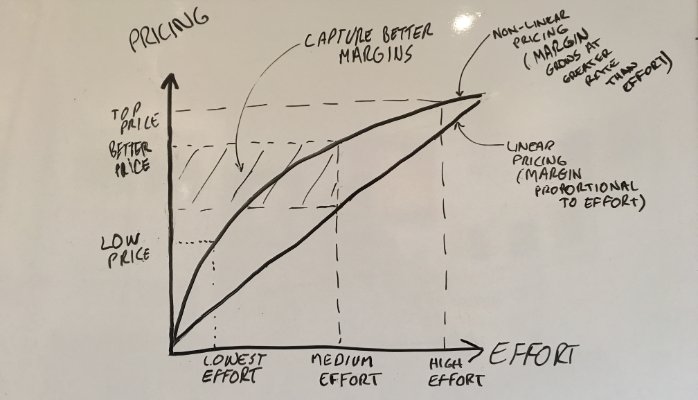How To Maximize Your Margins
Andrew (Andy) Kemal
Founder/Principal Consultant at INFIX - LIFE COACHES FOR COMPANIES (Kemal Consultants, LLC)
When working with clients I often find that the margins they garner could have been better if they changed their mentality around price setting.
The common thing I see is a propensity to set prices, and hence margins, based on the level of effort expended to produce/provide the product/service. However, this thinking - whilst generally a good starting point - doesn't do justice to the real sellable price and value of the product/service, because it leads to standard (linear) margins across the board. That is to say, margins end up being proportional to effort, which is not necessarily where they have to be.
Consider this-- Product "X" took less time to produce than Product "Y", but does that necessarily mean it's price should be lower? No, it could be the same or more. The customer doesn't know what effort was expended, their view of price will be based on the value they see or perceive.
Price setting should be an effort in understanding the value that a product/service represents to the end customer through market research, customer surveys, and understanding supply & demand trends. When prices are set this way margins will become variable (non-linear) and not linked to just the effort expended. The advantage of this is that margins can be maximized for each product or service based on the value they represent in the market.
Therefore, greater margins should be captured across product lines and services if you understand the value each provides, as well as looking at the effort you expend.







